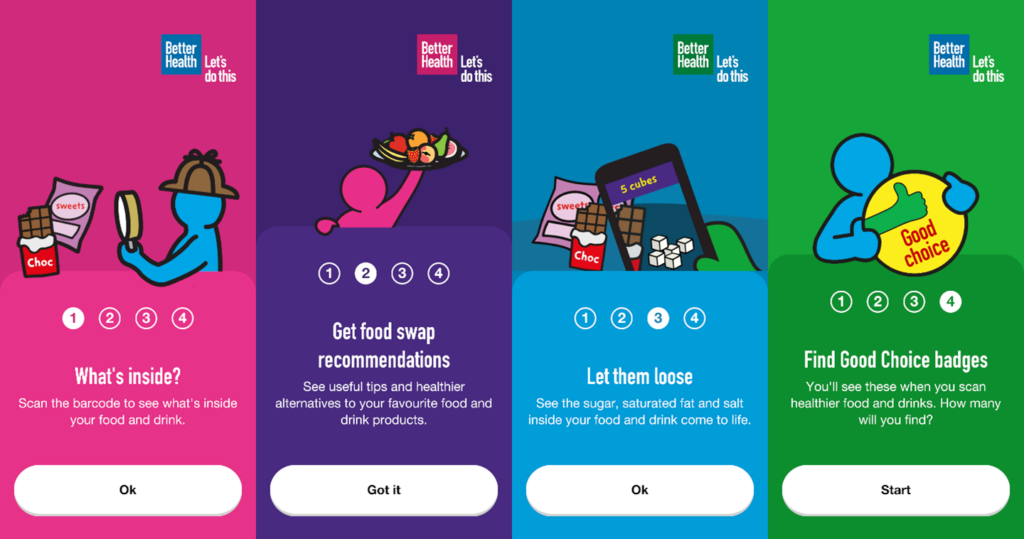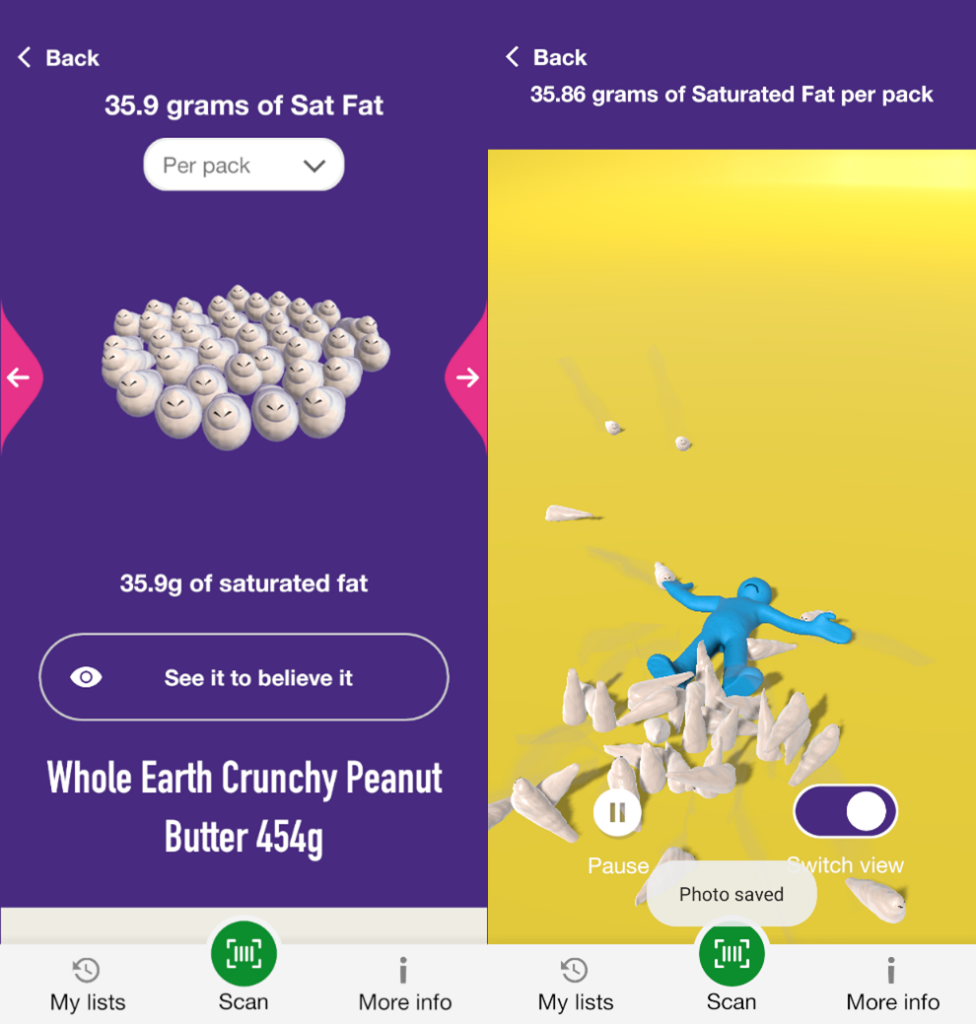Natalie Partridge is a third year Sociology PhD student at Newcastle University, researching food policy. Adding to our longstanding thread of blogs on food, Natalie tries the NHS Food Scanner App: the UK government’s latest addition to the Better Health campaign.
New year, new me! I’ve been jogging, had salad for lunch at least twice and subscribed to a 30-day yoga ‘journey’ (cringe) on YouTube. So, on the 9th of January when the launch of the new NHS Food Scanner App was announced, I thought I’d better have a look.
I’m not really the NHS Food Scanner’s target market. The app is designed for parents and children to use, ideally while they’re out doing their food shopping. The promise is simple: “hack” your diet with mostly like-for-like food swaps to reduce sugar, salt and fat intake. On the face of it, that sounds benign. The promotional video even contains the sunny phrase: “actually, you can make a healthier choice and it’s still pizza!” What could possibly go wrong?

I downloaded the app. The Google reviews are a little menacing, but it’s straightforward to get going with an encouraging four-step introduction slideshow (above). I can’t be bothered to go to the supermarket, so I head to the kitchen, grab a few typical breakfast ingredients and set them out on the table. I’m partly looking for positive reinforcement of my attempt at a super-virtuous January diet, so I pull out crunchy peanut butter, wholemeal bread, fruit (none of which is barcoded, disastrously) and coffee. I’m a bit irritated when the scanner doesn’t recognise the barcode on my bread, but it’s brown bread, so probably fine? My coffee is a “Go Go Green!” option, containing 0.8 sugar cubes per pack, whatever that means. The little green cartoon from Change4Life does a victory dance under a sprinkling of confetti.

It all starts to unravel when I scan my peanut butter. I don’t eat peanut butter all that often, so I’m more motivated by taste than price, although it is a little salty. It takes a long time for the scanner to work. I stand next to the window to make the best of the dull, grey daylight. I suppose the lighting is better than this in supermarkets. When the Food Scanner does eventually find my peanut butter, I wish it hadn’t. I’m whisked straight to a page with an angry army of little grub-like fat blobs advising me that each pack of peanut butter (an utterly useless measurement) contains 35.9g saturated fat. I’m then invited to “see it to believe it” in a virtual reality world where the grubs chase and overpower a poor blue cartoon character and jump on the corpse. Disheartened and a bit indignant, I check out the swaps, all of which, oddly, are sugar-free jams. Even if I were to want jam, which I don’t, I can’t find the top item on any supermarket website. A similar product has a warning that it’s “best to eat less than 44g per day” to avoid a laxative effect from the sorbitol, the main ingredient. There is no mention of the recommended daily intake for children, so let’s hope it’s the same. I also notice the jam is over double the price of the (sugary) equivalent supermarket own-brand jam. I think I’ll stick to my peanut butter. Or at a push, marmite, which the app doesn’t recognise, or cream cheese, which I am advised to swap for lower fat but higher sugar, and differently flavoured, alternatives.

Has Better Health missed the mark with this app?
All this has left a bad taste in my mouth. I used the Food Scanner for 10 minutes and it failed to scan half the foods I wanted it to. I’m glad I’m in my own kitchen. But I spare a thought for parents with their children, in busy supermarkets, squeezed by price increases and shrinkflation, understandably worried about health not least because we’re in a pandemic, all while trying to navigate these messages. Despite the glossy promotional material, I’m not expecting this to be overly positively received or particularly widely used. Although maybe I’m just being hypercritical of a well-intentioned, free tool designed to make it easier to eat healthily at home – most newspapers so far have covered its release but reserved comment.
So, let’s bypass for a moment the strange, expensive ‘swaps’ you can’t find at the supermarket. Let’s also overlook the negative messaging reminiscent of the “Eat Them to Defeat Them” fruit and vegetable campaign (which some argue did actually work), and the fact the Food Scanner is aimed, at least indirectly, towards children. The most concerning aspect of this app might be the sheer unwillingness to query the consumption of highly processed and convenience foods. This feels unsurprising from a government that resists use of the descriptor “ultra-processed” in food policy contexts, potentially rightly, as the debate plods on. In any case, those interested in a more ambitious policy approach to improve nutrition outcomes will likely be disappointed by this addition to the Better Health campaign. I mean, the app’s promotional video tells viewers that large 2L plastic bottles of artificially sweetened lemonade are a “good choice”, without even a cursory attempt to suggest a swap to water. While the toddler in the video might be delighted by that, an alternative strategy might be to avoid the Scanner, buy as much fruit and veg as possible, and hope for the best with everything else.
Editor’s note: Having tested the app for five minutes it recognised almost none of the items I scanned and was difficult and clunky to use. I would agree with Natalie, probably avoid and just try and buy fruit and veg!
